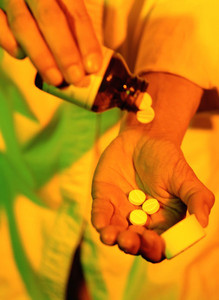Inter partes review (IPR) is a non-judicial process for challenging patents established by US Congress in 2011. A recent legal review explains the importance of IPR for the generic and biosimilar drug industries [1].
Inter partes review and the generic drug industry
Home/Policies & Legislation
|
Posted 18/09/2020
 0
Post your comment
0
Post your comment

The IPR process for challenging patents was created by Congress in 2011 and upheld by the Supreme Court in 2018 following a challenge relating to fracking technology. The failed challenge claimed that IPR deprived patent owners of their right to be heard in a court.
The IPR procedure has great relevance to the pharmaceutical industry, where patents play a particularly critical role. More than 1,100 drug products are protected by at least one patent, and on average each patent-protected drug has more than three patents on it.
Prior to IPR, the Hatch-Waxman Act (also known as the Drug Price Competition and Patent Term Restoration Act) was the most significant Act for pharmaceutical patents.
Under this Act, patent litigation can trigger a 30-month stay of approval for a generic drug application, providing time for the litigation to resolve and potentially allowing weak patents to have an effect on the market. It also allows brand-name manufacturers to extend the expiration date of a patent for up to five years.
To incentivize generics, the Act also gave the first generic drug manufacturer that brought a patent challenge a 180-day period during which no other generic could enter the market. However, as bringing a suit to the federal court is expensive and time-consuming, Congress began to consider changes to patent policy to help generate a more competitive market.
This ultimately led to the 2011 Leahy-Smith America Invents Act, which made a number of changes to the patent laws, including the establishment of IPR, which was intended to be faster and cheaper than federal court litigation.
IPR has a number of advantages over litigation for the patent challenger:
• Costs are 90% less
• A judgement is generally required within one year
• It is simpler to show that a patent is infringed
• Proceedings can be brought at any time (in contrast with federal lawsuits, whereby generic drug manufacturers can only seek to demonstrate patent invalidity after brand-name manufacturers have sued for infringement)
• IPR therefore allows pro-active challenges by generic drug manufacturers.
However, IPR has been opposed by some. The Pharmaceutical Research and Manufacturers of America (PhRMA), which represents brand-name drug manufacturers in the US, warned that IPR could damage innovation in drug development which ‘make sense only because the resulting intellectual property is respected as property’. Despite these and other concerns, the Supreme Court found IPR to be constitutionally permissible.
By the time the Supreme Court ruled in favour of IPR in 2018, at least 198 patents covering 134 small-molecule drugs had already been challenged with IPR. Roughly half of the completed challenges benefited the challenger.
In 2018 alone, almost 100 biopharmaceutical patents were challenged, and the number of drug patents challenged each quarter has been around four times as high as the number of new drugs approved each quarter.
As well as reducing costs for generic drugmakers, IPR may also shorten the time to generic drug entry. The review explains that filing a petition for IPR does not trigger the 30-month stay available under the Hatch-Waxman Act, which could hasten generic drug entry for products protected by weak patents.
IPR may be even more important for the biosimilars industry. Biosimilars are not subject to the regulatory scheme of the Hatch-Waxman Act and therefore are in even greater need of an affordable way of challenging patents.
What is more, some originator biologicals, such as AbbVie’s blockbuster anti-inflammatory Humira, are protected by more than 100 patents, making it very difficult for biosimilars to break through. Although only a single patent can be challenged in each IPR proceeding, the procedure can still help biosimilar manufacturers to enter the market sooner.
The net effect of earlier generic and biosimilar drug entry will be reduced prices for consumers and, overall, IPR helps to ensure that invalid patents do not block patient access to important medicines, the review concludes.
Related articles
Genentech and Amgen settle biosimilar disputes
China publishes new patent law amendment
US policy to combat high-priced generics
Reference
1. Darrow JJ, Sarpatwari A, Curfman G, Battling over patents: the impact of oil states on the generic drug industry. Yale Journal of Health Policy, Law, and Ethics. 2020;19(1).
Permission granted to reproduce for personal and non-commercial use only. All other reproduction, copy or reprinting of all or part of any ‘Content’ found on this website is strictly prohibited without the prior consent of the publisher. Contact the publisher to obtain permission before redistributing.
Copyright – Unless otherwise stated all contents of this website are © 2020 Pro Pharma Communications International. All Rights Reserved
Guidelines
New guidance for biologicals in Pakistan and Hong Kong’s independent drug regulatory authority
Canada poised to remove requirement for Phase III trials for biosimilars
Most viewed articles
The best selling biotechnology drugs of 2008: the next biosimilars targets
Global biosimilars guideline development – EGA’s perspective
Related content
ANVISA tackles 24-month backlog in biologicals post-registration petitions
US EO: delivering Most-Favored-Nation Prescription Drug Pricing to American patients
Uruguay to establish independent AUVISA drug agency for healthcare reform
Malaysia announces Screening Package for new drugs and biologicals
ANVISA tackles 24-month backlog in biologicals post-registration petitions

Home/Policies & Legislation Posted 10/10/2025
US EO: delivering Most-Favored-Nation Prescription Drug Pricing to American patients

Home/Policies & Legislation Posted 03/10/2025
Uruguay to establish independent AUVISA drug agency for healthcare reform

Home/Policies & Legislation Posted 17/09/2025
Malaysia announces Screening Package for new drugs and biologicals

Home/Policies & Legislation Posted 25/08/2025
The best selling biotechnology drugs of 2008: the next biosimilars targets






Post your comment